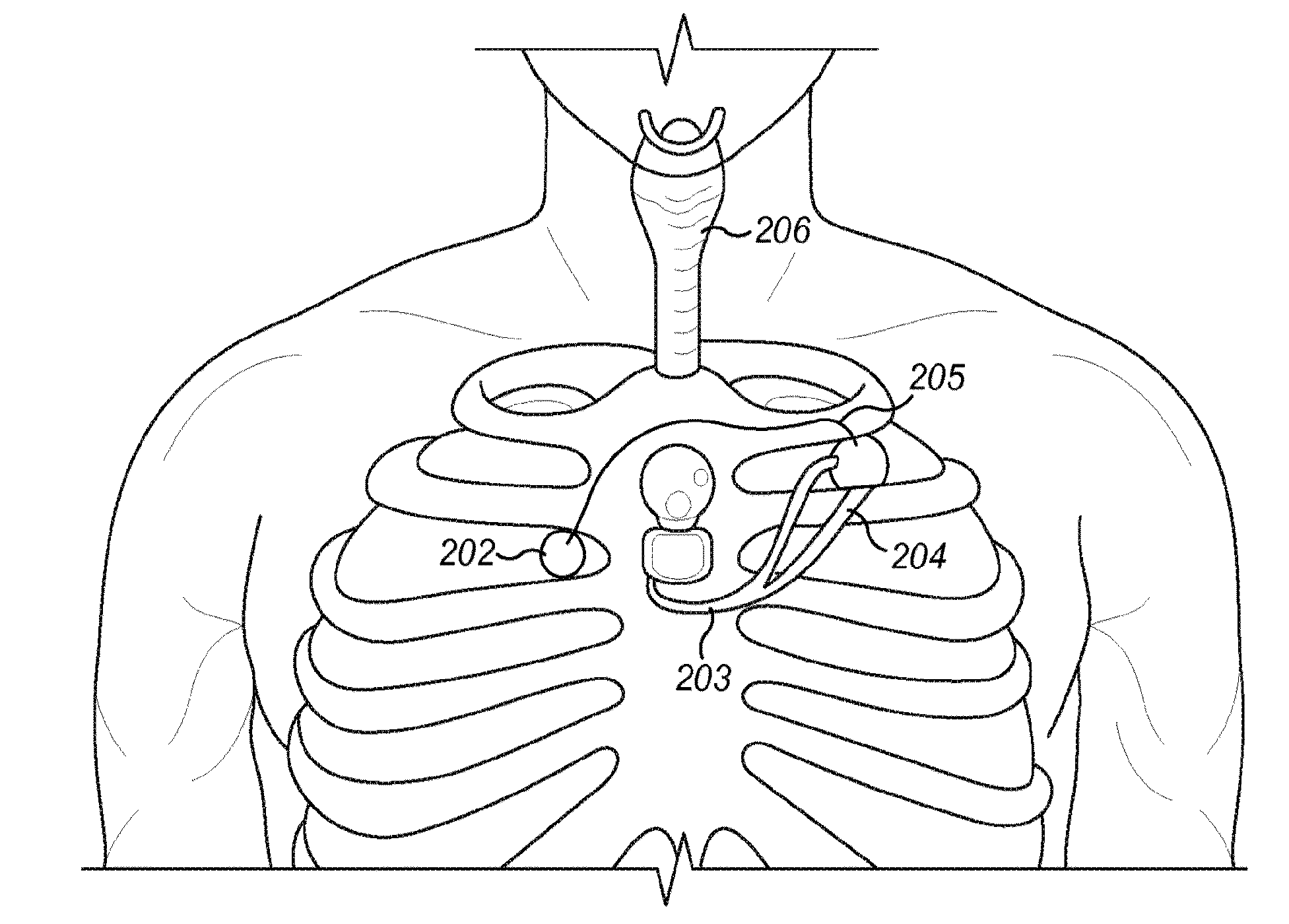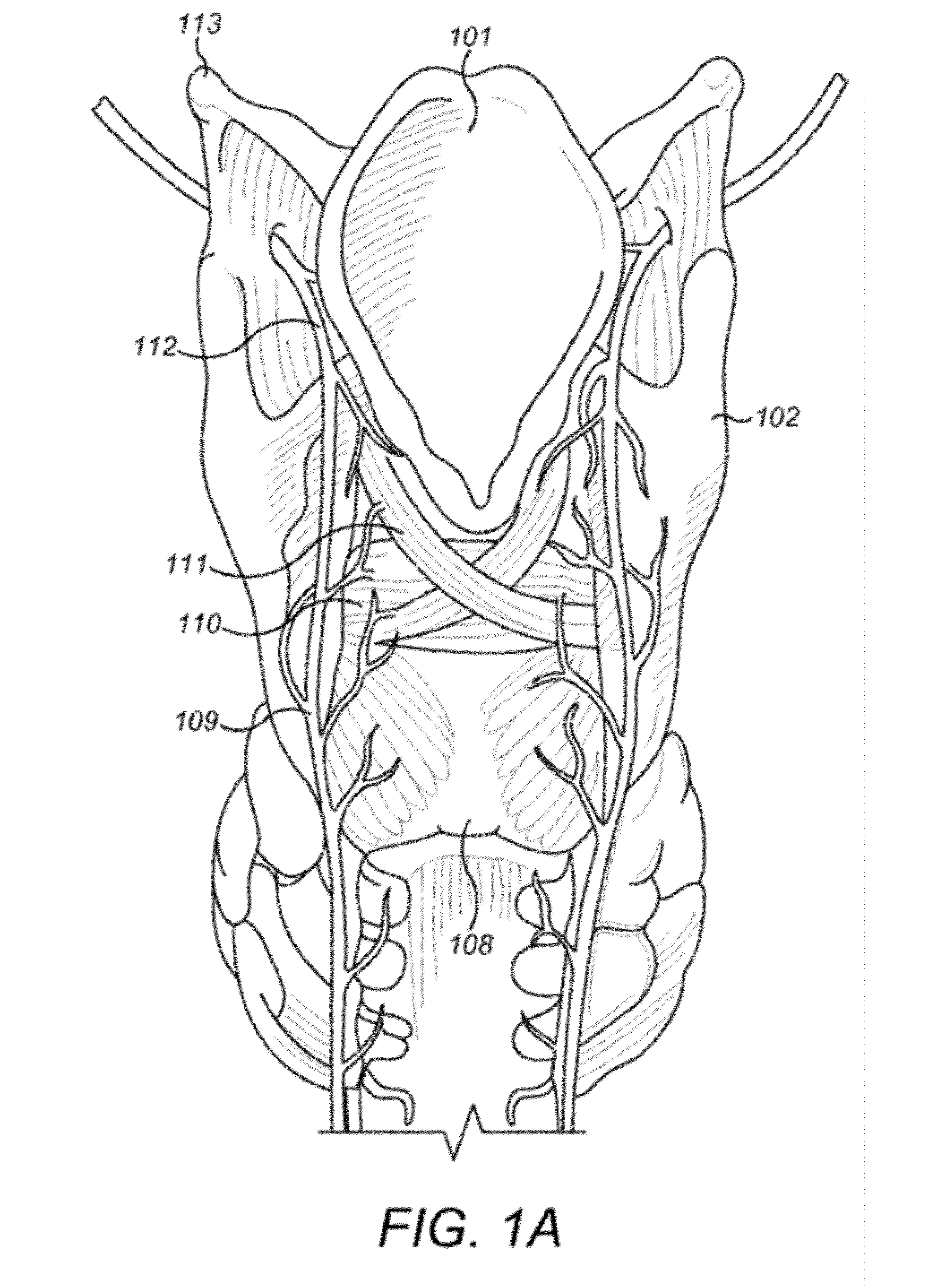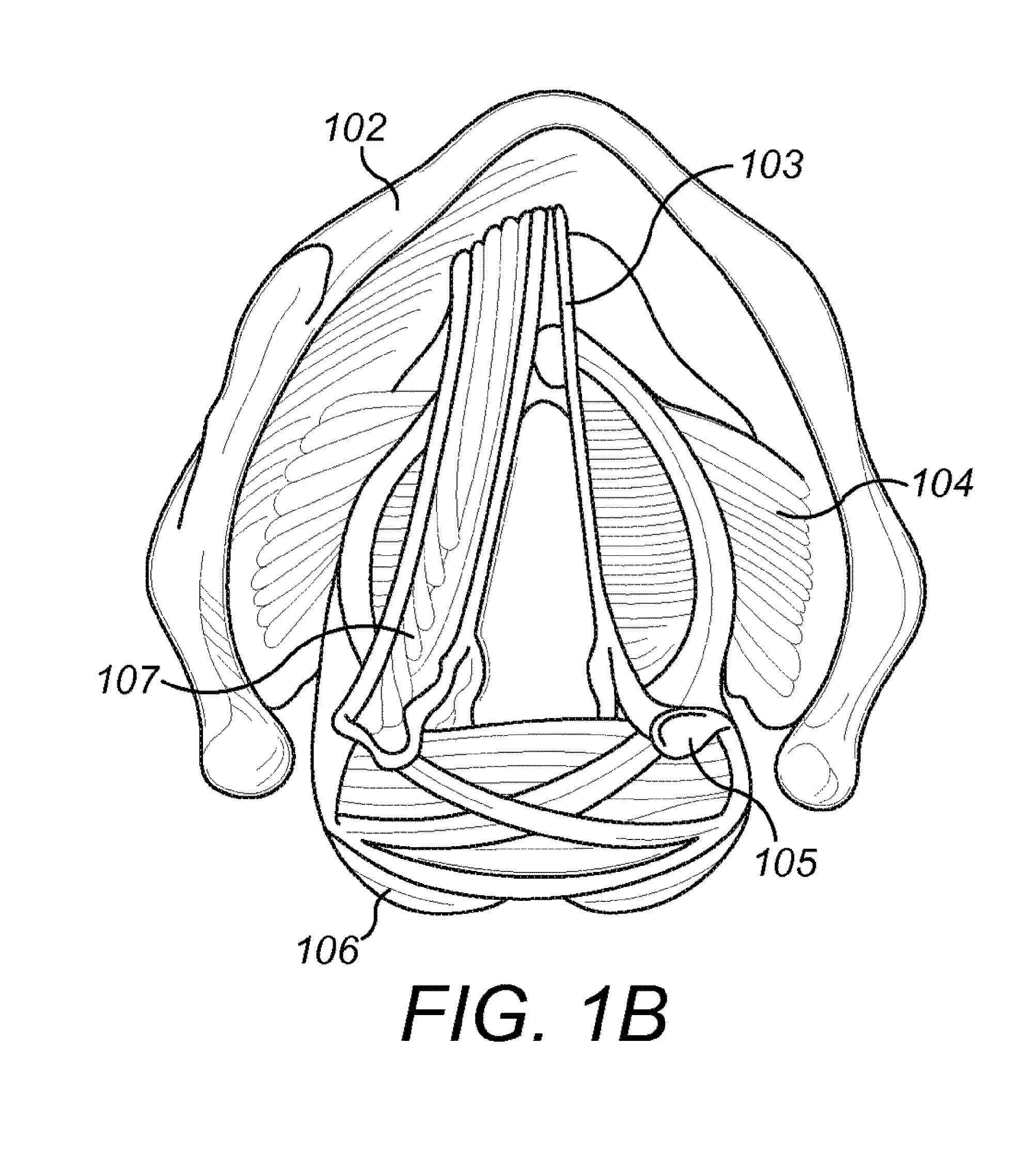Respiration Sensors For Recording Of Triggered Respiratory Signals In Neurostimulators
a neurostimulator and sensor technology, applied in the field of respiration implant systems, can solve the problems of restricting voice and putting at risk the protection of physiologic airways, and achieve the effect of promoting the breathing effort of the implanted patien
- Summary
- Abstract
- Description
- Claims
- Application Information
AI Technical Summary
Benefits of technology
Problems solved by technology
Method used
Image
Examples
Embodiment Construction
[0018]Various embodiments of the present invention are directed to improved respiration implants that use a respiration sensor implanted in the parasternal muscle to detect respiration activity in the patient with impaired breathing, together with a three-axis acceleration sensor and / or a gyroscope as a movement / position sensor. These sensors may be in the specific form of a small device package located inside the main implant housing or outside in a separate housing communicatively connected to the main implant housing. Such respiration implant systems include, for example, laryngeal pacemaker systems and sleep apnea treatment systems.
[0019]FIG. 2 shows one embodiment of such a respiration implant system with an implanted pacing processor 201 that receives a respiration signal from an implanted respiration sensor 202 implanted in the parasternal muscle that detects respiration activity in the implanted patient. Optionally, a three-axis acceleration movement sensor is located within...
PUM
 Login to View More
Login to View More Abstract
Description
Claims
Application Information
 Login to View More
Login to View More - R&D
- Intellectual Property
- Life Sciences
- Materials
- Tech Scout
- Unparalleled Data Quality
- Higher Quality Content
- 60% Fewer Hallucinations
Browse by: Latest US Patents, China's latest patents, Technical Efficacy Thesaurus, Application Domain, Technology Topic, Popular Technical Reports.
© 2025 PatSnap. All rights reserved.Legal|Privacy policy|Modern Slavery Act Transparency Statement|Sitemap|About US| Contact US: help@patsnap.com



